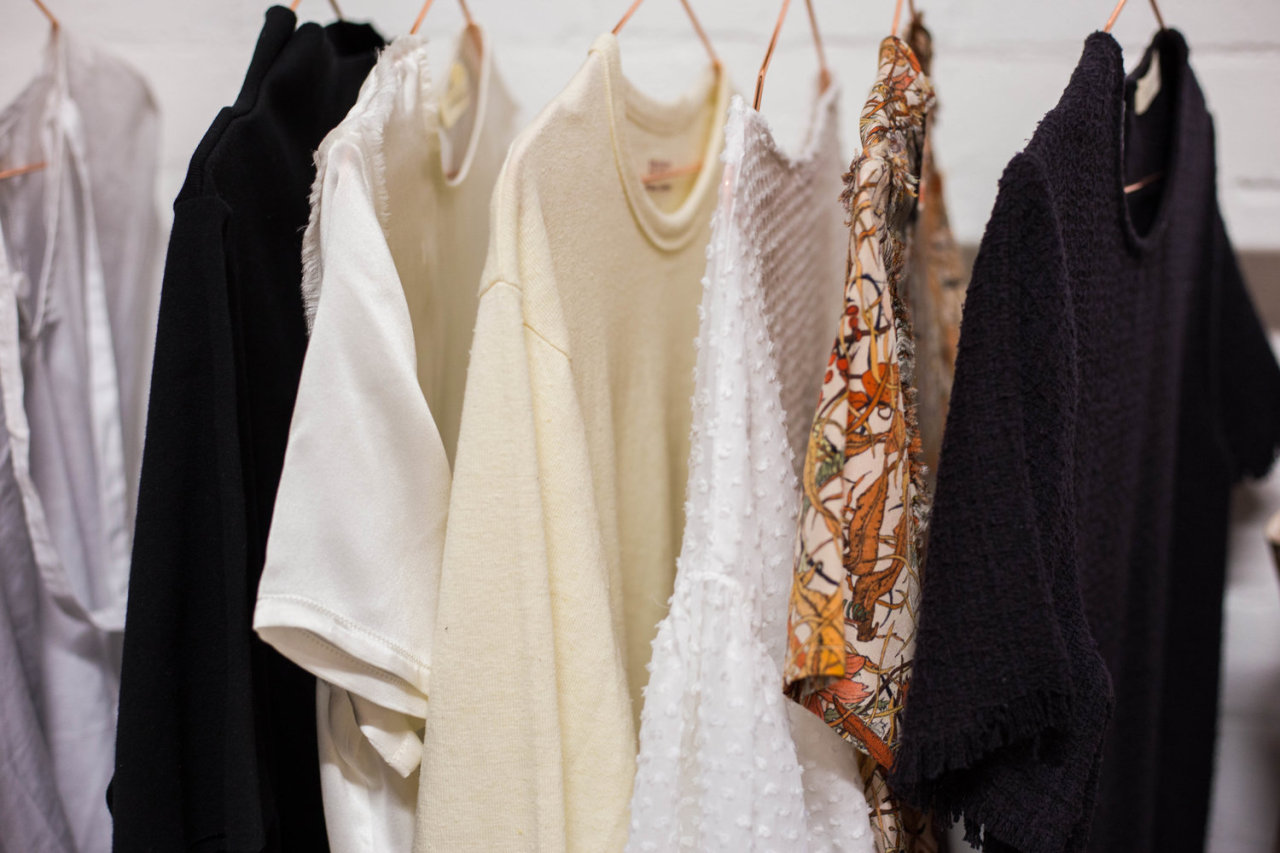By Janie Ryan
Creating a more conscious wardrobe that’s good for the planet and people means changing the way you think about clothes. We put together this list of essentials to help you get started. Whether you’re an ethical fashion expert or just learning the ropes, there’s something here for you!
Essential #1: Think before you buy
Thinking before you buy is the first step to building a sustainable wardrobe, not to mention living more waste-free in general. Challenge the “more is more” mentality by building a wardrobe composed of items you know you will get a lot of mileage from. Here are a few questions you can ask yourself to determine whether that cute blouse you’re eyeing will stand the test of time:
- Would I buy it if it weren’t on sale?
- Will I still want to wear it in three years?
- Will I have an occasion to wear it at least four times a month (barring those months when it’s just not right for the weather)?
- Will I actually wear it?
That’s right: be honest with yourself about whether you’re really going to wear that shirt (or frilly animal-print romper). If you find yourself making excuses for it (i.e. “it’s not my style but it’s really cute!”) there’s a chance you could be in fashion denial.
When in doubt, you can usually ask to put an item on hold, sleep on it, and come back later if you really can’t get it off your mind. In my experience, those items are usually forgotten the minute I leave the store.
Essential #2: Make the most out of your clothes before donating or discarding them
After watching a few episodes of Netflix’s addictive series Tidying Up With Marie Kondo, it can be tempting to purge your own closet of things that don’t “spark joy.” But you aren’t doing the environment any favors by hastily throwing your closet’s rejects in a donation pile. Only 20 percent of clothing donated to consignment stores is deemed fit for resale. The rest is either sent to recycling facilities, shipped for retail in developing countries (often to the detriment of local textile economies), or thrown away. In 2014, Goodwill alone sent 22 million pounds of unsellable clothes to landfills!
Being more minimalist is awesome, but don’t part with items that still hold some value for you. In particular, hold on to basics like tank tops, sweaters, and classic jeans. You might feel like you can let go of them now, but you’ll only end up replacing them in the near future.
Items that have truly overstayed their welcome in your closet might find purpose in other ways. Try turning old t-shirts into cleaning rags or even reusable makeup remover pads. Good Housekeeping has some great hacks for repurposing old clothes.
Essential #3: When you do dispose of clothing, do so responsibly
Being a conscious consumer means not only buying consciously but treating products responsibly once you no longer have a need for them. Dispose of unwanted clothes in the most eco-friendly way possible. Remember that if you simply donate to Goodwill or other popular consignment stores, there’s only a 20 percent chance that your donation will be resold. That doesn’t mean you shouldn’t do so, but try sticking to pieces that look like they have a chance at a second life.
The Good Trade has some great suggestions for upcycling your unwanted clothing, including where to recycle fabric and a list of impactful organizations that will put your donations to good use. Choose donation centers that recycle or donate clothing rather than sending it to landfills or developing countries (incurring carbon emissions and threatening local economies in the process). Project Ropa is committed to giving a second lease on life to gently-used garments. If you’re in the L.A. area, check out our donation page to learn more.
Why Have a Conscious Closet?
There is more fabric circulating the economy today than its 7 billion inhabitants know what to do with, and it’s choking our planet. Globally, we consume four times as much clothing as we did 20 years ago. But we also trash more of it — a LOT more. In the U.S. alone, people threw away 40 percent more fabric in 2009 than they did just a decade prior. It’s clear that although we’re shopping more, we’re not happy with what we buy.
The production and disposal of clothing generates environmental stress and huge social costs for garment workers around the world. At Project Ropa, we believe in challenging this status quo. Fashion can be more than a personal statement about who you are; your fashion choices can also reflect your concern for the planet and the people who make our clothes. And whether you prefer funky street style or classic chic, we think kindness looks great on everyone.
Photo credit Daisy Clementine





